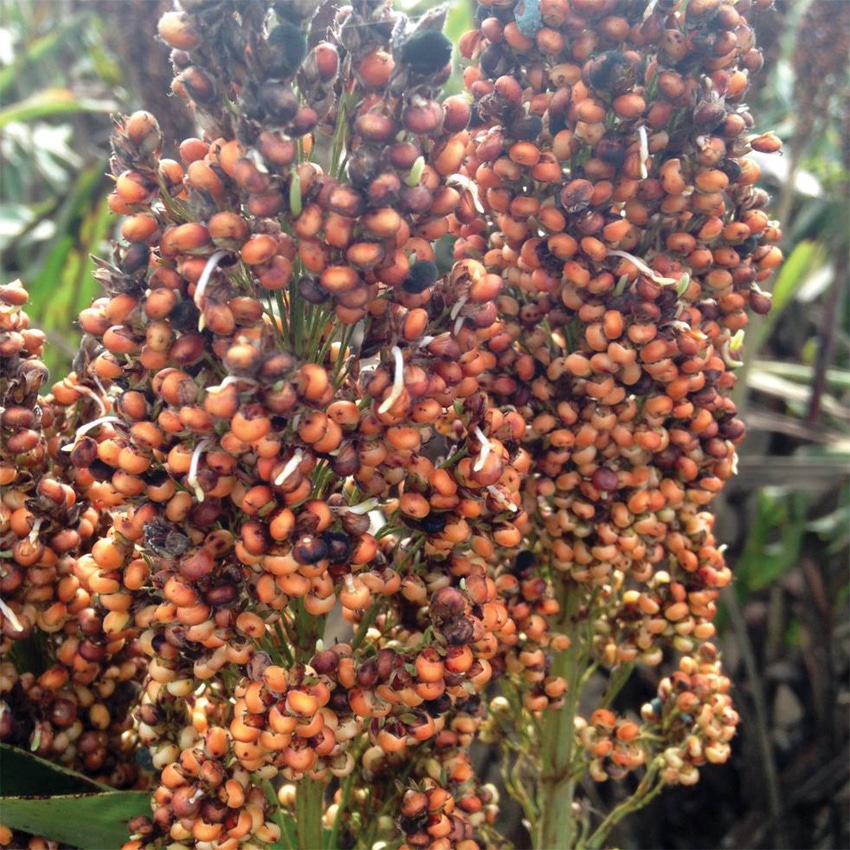August 23, 2016

Throughout the state of Louisiana, producers know that when inclement weather develops at harvest-time, the chance for pre-harvest sprouting of grain sorghum is increased. Pre-harvest sprouting is the germination of physiological mature or ripe grain before harvest.
In mid-August, Louisiana experienced pre-harvest sprouting of grain sorghum due to heavy rainfall. A significant portion of the state received at least 6 to 10 inches and upwards to 30 inches or more of rainfall in three to four days.
In 2016, approximately 75,000 acres of grain sorghum were planted in Louisiana. A significant amount of our sorghum acres had been harvested before the rain, but unharvested fields remain throughout the state.
Pre-harvest sprouting of grain sorghum occurs when there is a period of prolonged rainfall, high humidity, high temperature and alternate periods of wetting and drying that last for several consecutive days. Weather variables that affect the amount of pre-harvest sprouting include the amount of rainfall, humidity, temperature, and wind that is received.
Visual confirmation of sprouting includes the protrusion of the radicle through the seed coat. Following several days of dry weather, the radicle becomes shriveled and inconspicuous except upon close inspection.
Typical changes that occur as grain sorghum weathers include changes in the kernel causing breakdown of kernel structure and eventual loss of viability. Weathered grain is usually discolored in external appearance, has a dark discolored embryo, and the inside of the kernel is chalky in appearance due to partial hydrolysis of starch and protein.
The most obvious damaging effects of sprouting are yield losses due to shattering, and lower grades and bushel weights. A lower grade will result in a lower price per hundredweight of grain sorghum.
Also, the growth of fungi can occur, increasing the incidence of mycotoxins. The conditions that favor sprouting often compound the problem by delaying harvest. At harvest-time, weathered grain tends to be trashier and has a higher percentage of fines and broken kernels.
Differences in the ability of grain sorghum hybrids to resist field deterioration have been documented. Certain plant and kernel characteristics provide resistance to field deterioration.
The characteristics include: open heads with seed completely enclosed with long papery glumes, seed color, seed size, and seed with thin, smooth, translucent pericarp can affect the amount of weathering.
To evaluate grain sorghum hybrids on weathering, favorable environmental conditions for weathering must occur. In general, subjective field ratings of hybrids can provide reliable information on weathering; however, conclusions may be confounded by differences in maturity and interactions of diseases and insects.
For example, a late-planted or late-maturing sorghum hybrid may not show signs of sprouting as severely as others. This hybrid may not be genetically resistant, but merely escaped extensive deterioration because it was less mature and not exposed to adverse environment for as long. Therefore, maturity must be considered when evaluating for weathering.
All grain will weather with prolonged exposure to inclement weather.
Grain sorghum is not significantly altered nutritionally by weather damage. For livestock feeding purposes, only slight differences in nutritive value or chemical composition have been found when comparing non-weathered to weathered grain sorghum.
Also, livestock and poultry feeding trials have shown that weathered grain sorghum does not hinder animal performance.
Few remedies are available for preventing preharvest sprouting when weather conditions promote germination. Prompt harvest of the grain is usually the best solution to prevent sprouting, but this is easier said than done in our environment.
Also, grain sorghum can be harvested when it is wet (high moisture) but it must be dried which is an extra expense.
Dan Fromme is the Grain Sorghum and Corn Specialist for the LSU AgCenter.
You May Also Like




